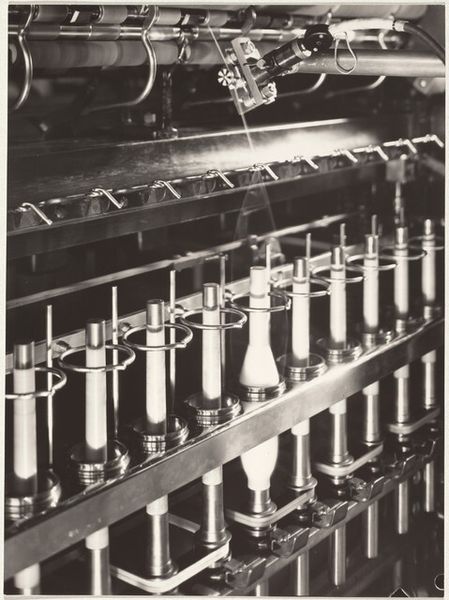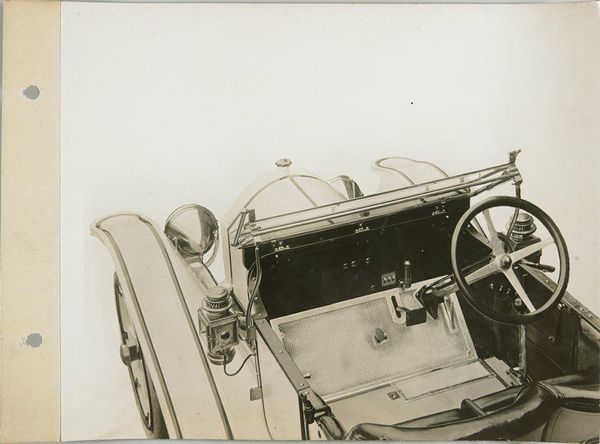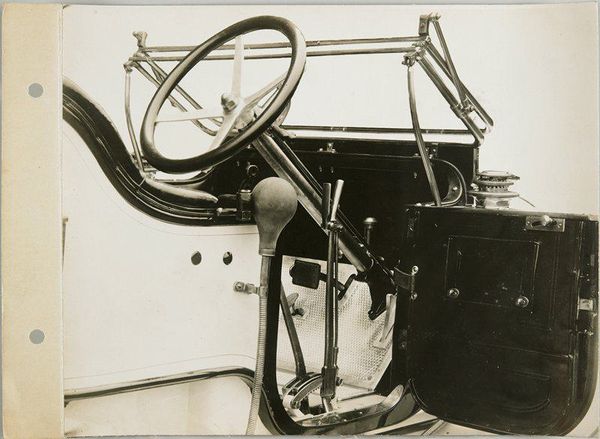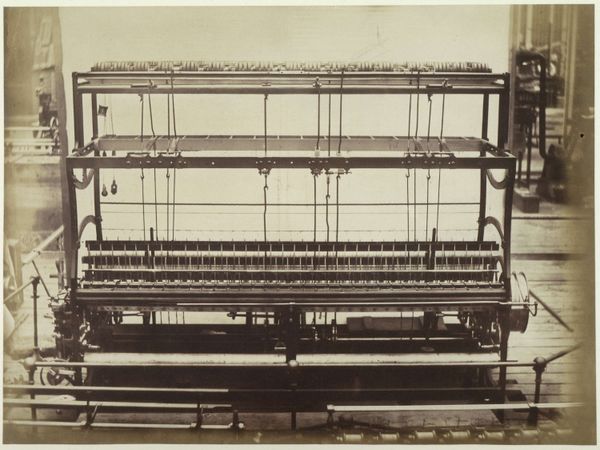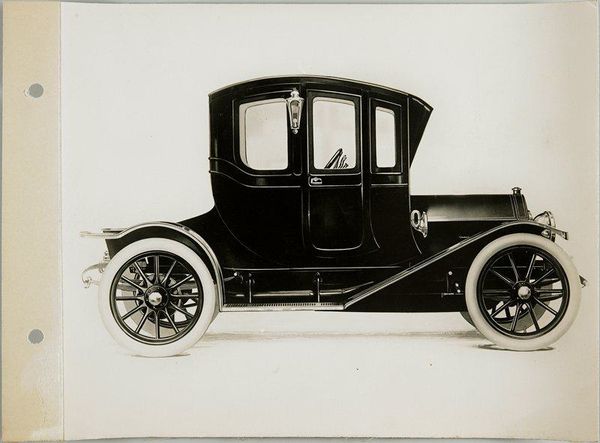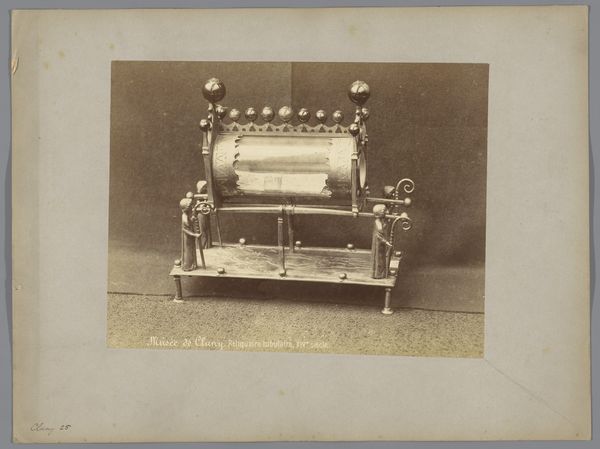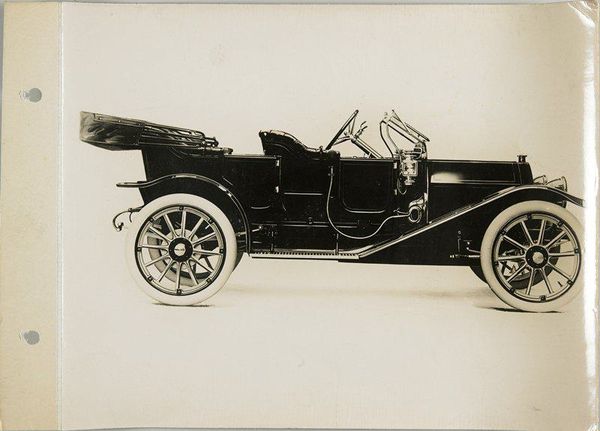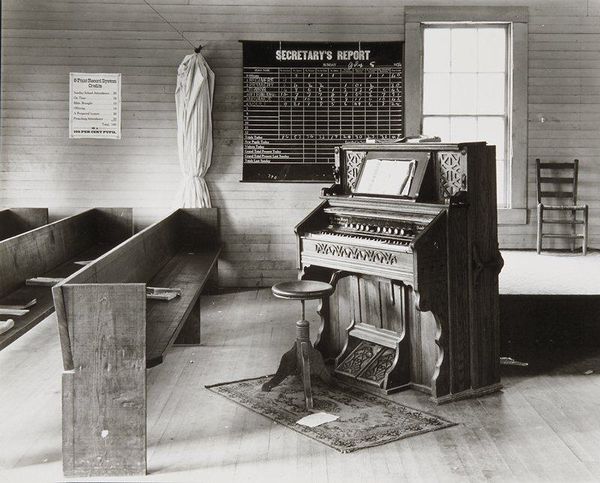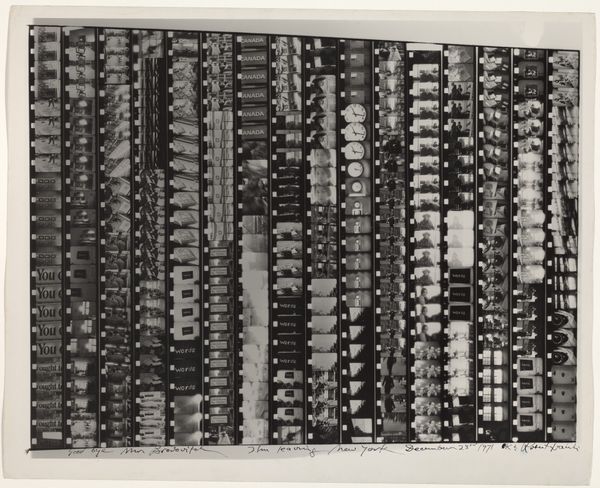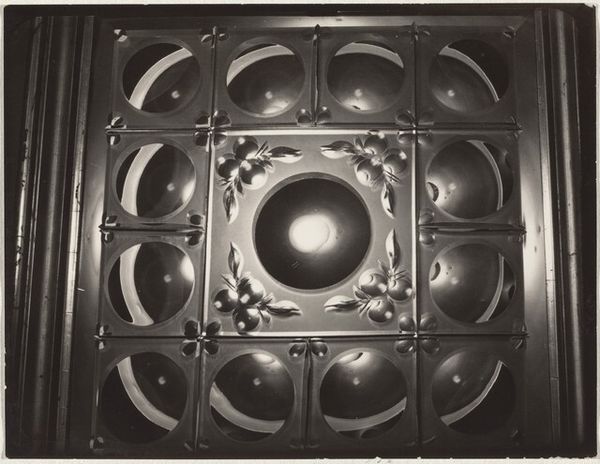
gelatin-silver-print, photography, gelatin-silver-print
#
still-life-photography
#
gelatin-silver-print
#
photography
#
gelatin-silver-print
Dimensions: 7 3/8 x 9 3/16 in. (18.73 x 23.34 cm) (image)7 3/8 x 10 3/16 in. (18.73 x 25.88 cm) (mount)
Copyright: No Copyright - United States
Curator: Welcome. Today, we are exploring an "Untitled" gelatin silver print from around 1911, held here at the Minneapolis Institute of Art, attributed to Spooner & Wells. Editor: My initial reaction is claustrophobia. The interior is lush, yes, with that tufted leather, but also so incredibly contained. It's a tight composition that feels…expensive but also isolating. Curator: That's a fascinating read. Historically, this photograph grants a rare peek into the world of early twentieth-century luxury transportation. We see an era where even mundane travel aspired to grandeur and a rigid sense of privacy. The elite separated themselves from the masses, quite literally, even on the road. Editor: It is interesting how photography itself served as a way to showcase craftsmanship of this time. I am thinking of the quality of the materials used; from the polished glass to the tufted leather, it emphasizes texture and production. The gelatin silver print process itself becomes intertwined with how we perceive luxury. Curator: Precisely. The meticulous detail captured through this photographic technique further underscores the deliberate craftsmanship and curated experience inherent in these vehicles. The photograph almost becomes an advertisement of wealth. Editor: But think about the labor required! Someone had to stitch all that leather, polish the metal, tend to the horses that would pull this thing. Photography hides it, glamorizes it. Don't you think the image highlights the contrast between upper class indulgence and working class labor? Curator: Absolutely. Photography, while showcasing opulence, often obscures the social structures that enable it. But what’s striking is the ambiguity, too. We see no occupants. Only an empty carriage, creating a powerful void in the social narrative of the era. Editor: Agreed. It prompts us to question not just the vehicle itself, but who truly benefitted from this material reality and at whose expense this "comfort" was manufactured. Curator: Reflecting on our conversation, it seems this photograph, beyond capturing material luxury, serves as a historical document of class and social aspiration. Editor: Ultimately, it encourages a consideration for materiality as both object and process, intertwined with human conditions of its making.
Comments
No comments
Be the first to comment and join the conversation on the ultimate creative platform.
